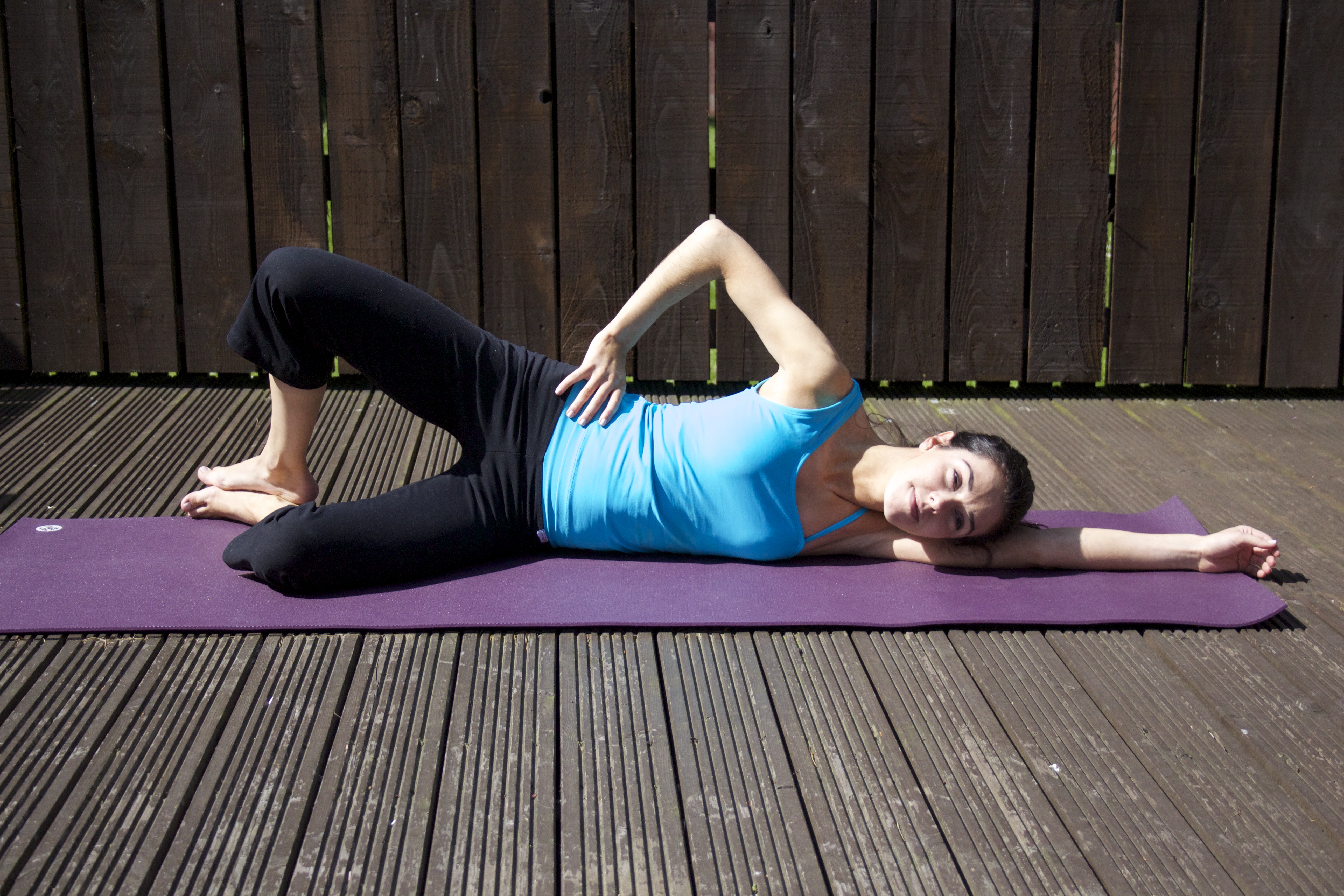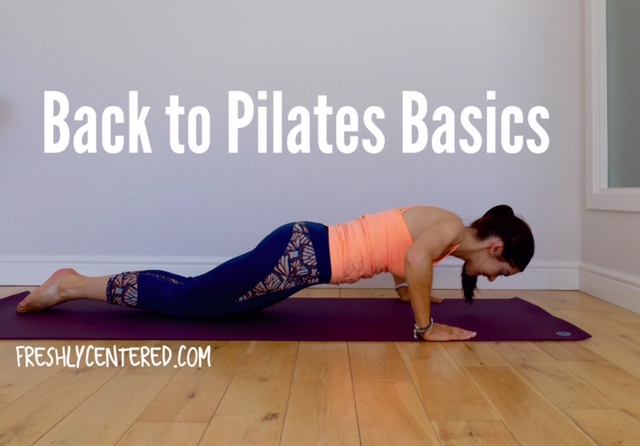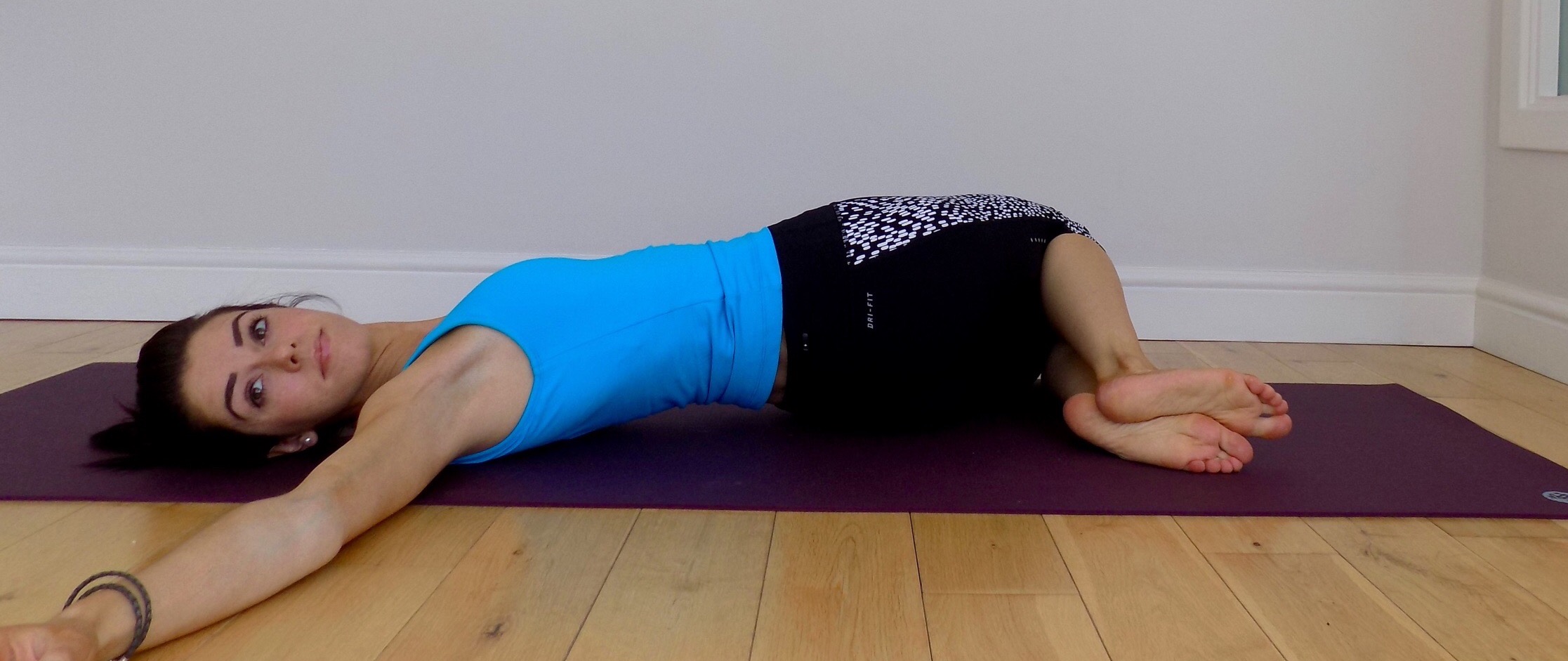Wearing: To The Beat 3/4 Dance Leggings and Chaturanga Yoga Vest
.
Recently I’ve had a large number of new pilates clients and enquiries from those who have never done pilates before. Firstly- Great that you want to start Pilates! Secondly, I thought I’d put together a post to introduce the pilates exercise basics to explain what it is all about and why it is so good for you. This is great for the newbies, but also a reminder to those who already practise! Click HERE to play the Back to Basics workout video.
Pilates works the whole body, NOT just the core! The movements originate from the core, but the workout is designed to strengthen and lengthen the whole body for an overall strong, efficient working body. The exercises cover several different regions:
Endurance:
A lot of exercise programmes work simply on repetitions. Pilates does too, but endurance should also be considered because its all well and good being able to perform a movement but the endurance comes from holding that position for a little longer. We start the Back to Basics Workout with The Hundreds– The traditional pilates endurance exercise to recruit the core muscles.
Flexion/extension:  Most daily activities involve flexion (forward bending) and we do it so much during the day. Flexion is important to strengthen our core muscles, however if done incorrectly can strain your back or neck. Don’t think of “crunches or sit ups”, think of lengthening while forward bending.
Most daily activities involve flexion (forward bending) and we do it so much during the day. Flexion is important to strengthen our core muscles, however if done incorrectly can strain your back or neck. Don’t think of “crunches or sit ups”, think of lengthening while forward bending.
Extension (backwards bending) is a rare movement in normal activities, but the spine needs to move this way to counteract all of the flexion activities- reading, typing, sitting, bending etc. Extension is so important to maintain normal balance with your spine, to keep your back muscles strong, and prevent overload from too much flexion.
The spine is often seen as a straight-up-and-down type of structure, however it should also be used to rotate the body. Not from your shoulders, chest or hips, but by rotating at each vertebral body. A healthy spine allows movement in these various directions and prevents stiffness and strain. Rotating safely can be done using the core muscles.
Posterior/back: This category falls similar to that of the extension exercises. Many people focus on developing their chest muscles, arms, and spent way too long flexing forwards. Strengthening the upper back muscles, shoulder blade stabilisers, latissimus dorsi, gluteals and hamstrings will ensure the body is balanced front AND BACK.
This category falls similar to that of the extension exercises. Many people focus on developing their chest muscles, arms, and spent way too long flexing forwards. Strengthening the upper back muscles, shoulder blade stabilisers, latissimus dorsi, gluteals and hamstrings will ensure the body is balanced front AND BACK.
Gluteals: The butt muscles! The exercises everyone hates! But they are so important. The gluteals are hugely responsible for pelvic stability, lower limb alignment, gait, posture, the list goes on. The gluteals compromise three main muscles: gluteus maximus, medius, and minimus, but within this group there are also the small hip rotator muscles that contribute to this power area too. If you have a weakness on one side it can affect your walking, running, pelvic stability and then knock on to your knees, ankles…. Strengthening these muscles individually helps alleviate a lot of problems!
The butt muscles! The exercises everyone hates! But they are so important. The gluteals are hugely responsible for pelvic stability, lower limb alignment, gait, posture, the list goes on. The gluteals compromise three main muscles: gluteus maximus, medius, and minimus, but within this group there are also the small hip rotator muscles that contribute to this power area too. If you have a weakness on one side it can affect your walking, running, pelvic stability and then knock on to your knees, ankles…. Strengthening these muscles individually helps alleviate a lot of problems!
Try the Back to Basics workout where I take you through exercises from each of these sections. Also, try this Pilates for Beginners video too.






